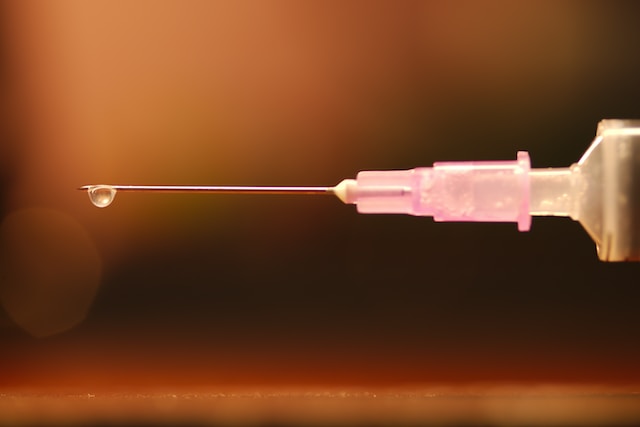
Botox vs Dysport: A Comprehensive Comparison of Medspa Services
When it comes to medspa services, Botox and Dysport are two of the most popular treatments for reducing the appearance of fine lines and wrinkles. However, many people are unsure about the differences between these two injectables. And which one is the best choice for their needs. In this article, we will address the most common questions people have about Botox and Dysport. We will provide specific answers and solutions to help you make an informed decision.
What are Botox and Dysport?
Botox vs Dysport
Botox and Dysport are both injectable neuromodulators that work by temporarily relaxing the muscles responsible for causing wrinkles and fine lines. They are derived from the same neurotoxin, botulinum toxin type A, which is produced by the bacterium Clostridium botulinum. Both treatments are FDA-approved and have been used safely and effectively for many years.
Botox, or onabotulinumtoxinA, was first approved by the FDA in 1989 for the treatment of eye muscle disorders and later for cosmetic purposes in 2002. Dysport, or abobotulinumtoxinA, was approved by the FDA in 2009 for the treatment of moderate to severe frown lines between the eyebrows.
How do Botox and Dysport work?
Botox and Dysport work by blocking the nerve signals that cause muscle contractions. When injected into specific facial muscles, they temporarily relax the muscles, reducing the appearance of wrinkles and fine lines. The effects of both treatments are temporary, typically lasting between three to six months, depending on the individual and the area treated.
What are the differences between Botox and Dysport?
While Botox and Dysport are similar in many ways, there are some key differences between the two treatments that may influence your decision on which one to choose.
Dilution and Units
One of the main differences between Botox and Dysport is the way they are diluted and the units used to measure them. Dysport is more diluted than Botox. This means that more units of Dysport are needed to achieve the same effect as a smaller number of Botox units. However, this does not necessarily mean that Dysport is less effective or more expensive than Botox. The cost of treatment will depend on the total number of units required and the pricing set by the medspa or provider.
Onset and Duration of Effects
Another difference between Botox and Dysport is the onset and duration of their effects. Some studies have suggested that Dysport may have a slightly faster onset of action. With results appearing within two to five days, compared to Botox, which typically takes three to seven days for the effects to become noticeable. However, individual results may vary, and some patients may not notice a significant difference in the onset of effects between the two treatments.
In terms of duration, both Botox and Dysport generally last between three to six months. Some studies have suggested that Dysport may last slightly longer than Botox in some patients. But more research is needed to confirm these findings.
Spread and Precision
Dysport has a slightly larger spread than Botox, which means that it may diffuse more easily into the surrounding tissues. This can be an advantage in some cases, as it may provide a more natural-looking result. However, it can also be a disadvantage in areas where more precision is required, such as around the eyes. In these cases, Botox may be the preferred choice due to its more targeted action.
Which treatment is right for me: Botox or Dysport?
The choice between Botox and Dysport will depend on your individual needs, preferences, and the specific areas you wish to treat. Both treatments are effective at reducing the appearance of wrinkles and fine lines, and the differences between them are relatively minor.
In general, Botox may be the preferred choice for those who require more precision in their treatment, such as around the eyes or for smaller areas. Dysport may be more suitable for those who want a more natural-looking result or a slightly faster onset of effects.
It is essential to consult with a qualified and experienced medspa professional or healthcare provider to discuss your specific needs and determine which treatment is the best option for you. They will be able to assess your individual requirements and recommend the most appropriate treatment plan.
Are there any side effects or risks associated with Botox and Dysport?
Both Botox and Dysport are generally considered safe and well-tolerated when administered by a qualified professional. However, as with any medical treatment, there are some potential side effects and risks associated with their use.
Common side effects of both treatments include:
– Pain, swelling, or bruising at the injection site
– Headache
– Temporary muscle weakness or drooping
More serious but rare side effects can include:
– Difficulty swallowing or breathing
– Allergic reactions
– Spread of the toxin to other areas of the body
It is important to discuss any concerns or potential risks with your healthcare provider before undergoing treatment with Botox or Dysport.
Conclusion: Botox vs Dysport
In summary, Botox and Dysport are both effective and popular medspa treatments for reducing the appearance of fine lines and wrinkles. While there are some differences between the two treatments, such as dilution, onset of effects, and spread. The choice between Botox and Dysport will ultimately depend on your individual needs and preferences. By consulting with a qualified and experienced professional, you can determine which treatment is the best option for you and achieve the desired results.



